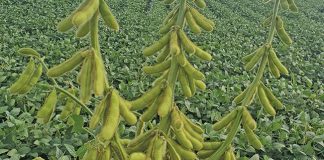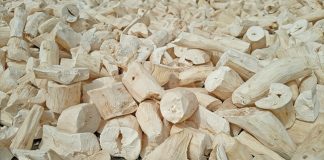The results of the Agricultural Research Council’s national maize cultivar trials for the western production region showed that DKC80-40BR was the best yellow cultivar in single-year trials, while PAN6Q-419B was the best white cultivar. DKC80-40BR yielded an average of 7,55t/ha and PAN6Q-419B produced 8,13t/ha.
The single-year trials of 50 cultivars were conducted at 34 localities in the western production area. A standard of 40 plants per net plot were prescribed, and all trials were held on dry land. Researchers were wary about drawing conclusions on lodging, as different cultivars dried out to different moisture percentages.
They concluded, however, that the lodging percentage was low during the trials.Tillering (spruitvorming) is influenced by factors such as soil fertility, fertilisation, temperature, plant density and temperatures. In the single-year trials, the highest average tillering for a yellow cultivar was 48,48% (Phb30Y82BR) and for a white cultivar, 57,23% (PAN6723). Ottosdal was shown to have the highest tillering (44,7%), while Bothaville had the lowest (5,55%).
According to the report, the 2010/2011 season was a good year for ear development. Leeudoringstad had the highest mean for ears per plant at 2,24 while Coligny had the lowest at 1,92. White cultivars PAN6Q-419B and PAN6Q-445B had the highest prolificacy with means of 2,78 and 2,57 ears per plant respectively.
The trials concluded that grain moisture in the single-year trials tended to be low, varying from 12,12% in Lichtenburg to 20,03% at Bothaville. For yellow cultivars, the highest grain moisture was 16,22% for PAN6Q-308B and the lowest was 13,16% for Phb32W72B. For white cultivars, the highest moisture level was 17,82% for CAP9001 while the lowest was 13,7% for KKS8301.
The highest average yield was recorded at Leeudoringstad (10,63t/ha) and the lowest at Glaudina (2,87t/ha). The ARC warns that environmental conditions differ from year to year and that cultivar performance should be gauged from multi-year trials.
Multi-year trials
The report emphasises that the growing conditions during the 2008/2009, 2009/2010 and 2010/2011 seasons should be taken into account before pronouncing on cultivar performance. The trials were conducted for 21 cultivars at 68 localities.
Researchers were reluctant to pronounce on cultivars’ ability to avoid lodging due to relatively high seasonal differences. The lowest mean for lodged plants over the three seasons was 0,09% for DKC73-74BR (this was as a percentage of total plants). The LS8521B held the highest mean at 2,09%.
The highest mean for tillering over the three seasons – 51,51% – was recorded for PAN6Q-445B, while the second-highest mean – 49,29% – was demonstrated by IMP 52-11. The lowest mean was recorded for PAN4P-316B (13,14%). The highest mean for ears per plant – 2,47 – was recorded for PAN6Q-445B. The lowest was for LS8518 (0,97).
The cultivar with the highest grain moisture mean over the trial period was LS8519 at 15,18%. The lowest mean recorded was for PAN4P-316B (12,82%) and IMP52-11 (12,83%). The highest yield for a yellow cultivar over the three seasons was demonstrated by DKC80-40BR – 6,61t/ ha.
The top-yielding white cultivar was PAN6Q-445B (7,25t/ha). Finally, the most stable white cultivar was DKC77-61B, while the most stable yellow one was PAN6Q-308B.
Contact: ARC-Grain Crops Institute on 018 299 6218.
Source: Maize: National Cultivar Trials – Western Area, ARC-Grain Crops Institute. •FW













